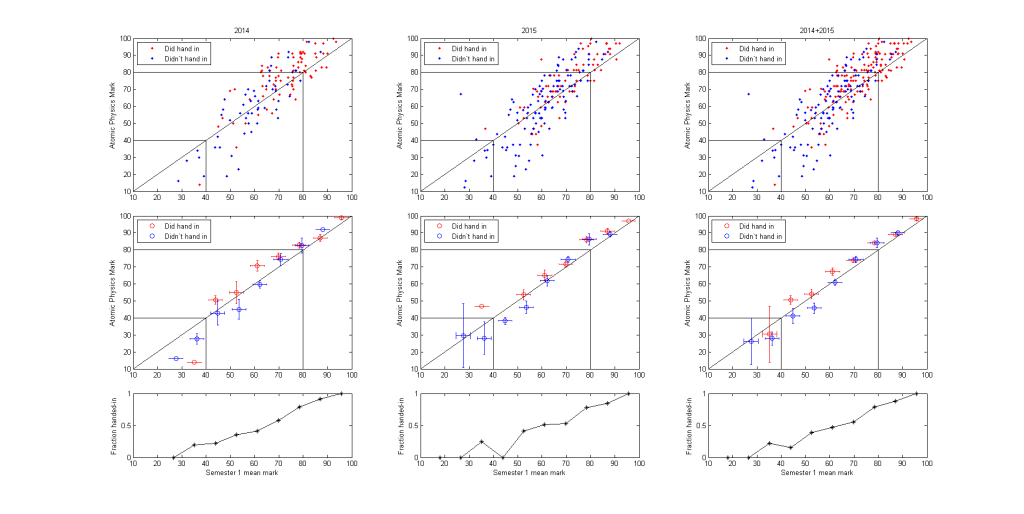In two previous blog posts (here and here) I outlined the rationale behind and presented an analysis of the first year's worth of data for my "Automated and anonymous coursework". Here I will add in the second year's worth of data and see what's what.
What is it?
A second year course in Quantum and Atomic Physics run in the first semester of the academic term with just under 200 students, mostly physics students, but some Natural Scientists, some Maths and Physics and some straight maths students. The course is challenging and mostly all new physics. How to get the students to play with the mathematics core to the course which is not really suitable for an exam questions? Answer: course-work. The questions are designed to aid a deeper understanding of the physics. The course-work is formative, that is it does not cout towards the final unit mark. I get about half the students submitting their work. The feedback I get is positive about the coursework.
Did it have an effect?
What to measure? I can measure the mark the students got for my bit of the Quantum and Atomic Exam and the overall average marks the students got for the semester, both for those that did the coursework and those that did not.
 Click on the graph to see them at a more useful size. These charts show two year's worth of data.
Click on the graph to see them at a more useful size. These charts show two year's worth of data.
- Students that have, monotonically, a higher overall average mark for the semester are more likely to hand-in the coursework, although students below an average of 40 % didn't do the coursework at all (bar 2 students).
- For students with an average mark above ~ 80 % the coursework makes little difference.
- Between 40% and 80% there is a reasonably consistent trend that those that did the coursework gain a higher atomic exam mark than those equivalent students (same average semester mark) that did not. The mean difference between hand-in/no-hand-in is (8 +- 2) %. Quite a bump up the mark scale.
Perhaps if we could similarly analyse the various problem-sheets as well we could see the bit by bit gain of marks that engaging with the course and the problems to solve gives.
Conclusion
The coursework is effective (to a degree) in providing a deeper understanding of the underlying physics.*
------------
Many thanks to Kristina Rusimova for organizing the data.
*Assuming that is what the exam tests**.
** Another story.
Responses